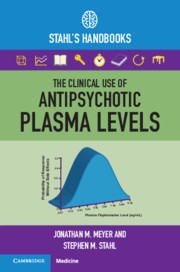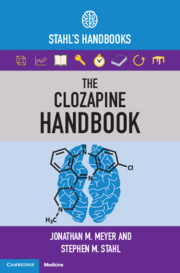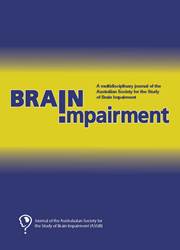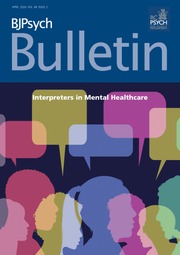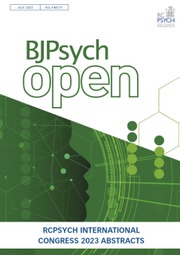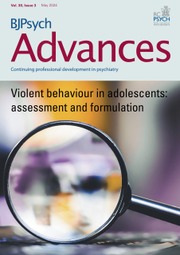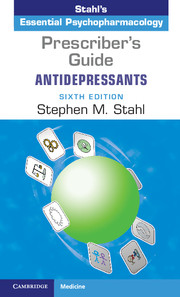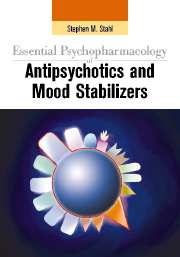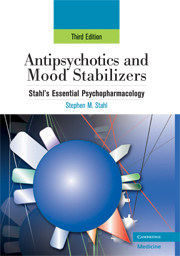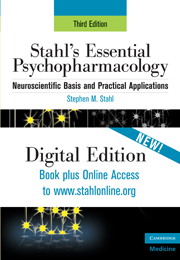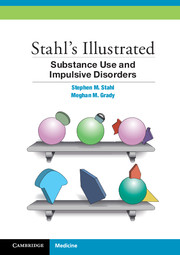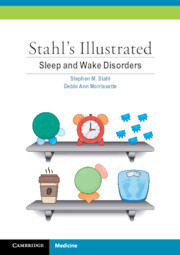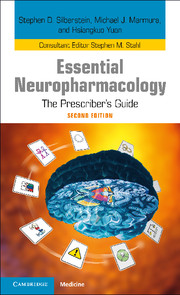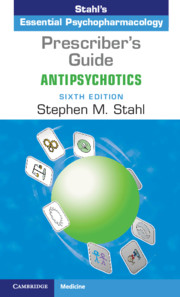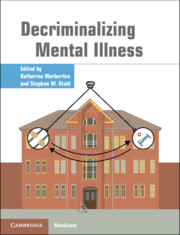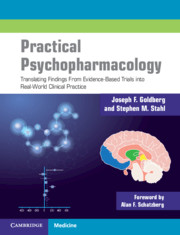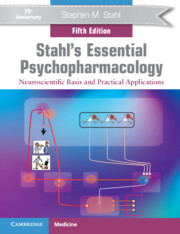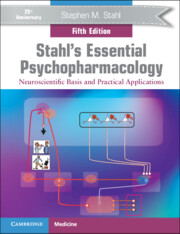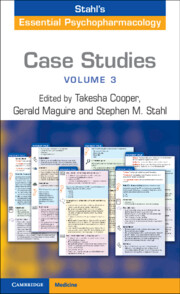The Clinical Use of Antipsychotic Plasma Levels
Stahl's Handbooks
£41.99
Part of Stahl's Essential Psychopharmacology Handbooks
- Authors:
- Jonathan M. Meyer, University of California, San Diego
- Stephen M. Stahl, University of California, Riverside and San Diego
- Date Published: September 2021
- availability: Available
- format: Paperback
- isbn: 9781009009898
£
41.99
Paperback
Other available formats:
eBook
Looking for an inspection copy?
This title is not currently available on inspection
-
Clinicians recognize that monitoring psychotropic levels provides invaluable information to optimize therapy and track treatment adherence, but they lack formal training specifically focused on the use of plasma antipsychotic levels for these purposes. As new technologies emerge to rapidly provide these results, the opportunity to integrate this information into clinical care will grow. This practical handbook clarifies confusing concepts in the literature on use of antipsychotic levels, providing clear explanations for the logic underlying clinically relevant concepts such as the therapeutic threshold and the point of futility, and how these apply to individual antipsychotics. It offers accessible information on the expected correlation between dosages and trough levels, and also provides a clear explanation of how to use antipsychotic levels for monitoring oral antipsychotic adherence, and methods to help clinicians differentiate between poor adherence and variations in drug metabolism. An essential resource for psychiatrists, psychiatric nurse practitioners, and mental health professionals worldwide.
Read more- Contains detailed coverage of the appropriate sampling times for oral and long-acting injectable antipsychotics based on the kinetics of each agent and discusses the current thinking surrounding what defines an adequate antipsychotic trial, and how to using plasma levels to optimize psychiatric response and tolerability
- Provides a logical, evidence-based justification for the therapeutic threshold and the point of futility for 18 commonly used oral and long-acting injectable forms of first- and second-generation antipsychotics, allowing for a better understanding of the nuances and limitations of the data for each antipsychotic, instead of providing lists of therapeutic ranges with no explanation
- Offers detailed information on dose and plasma levels correlations for antipsychotics, providing clinicians with the tools to interpret the plasma level information obtained, and on the next steps to take when levels are markedly above or below those expected for a given dose
Reviews & endorsements
'As we redouble our efforts to achieve the goals of personalized medicine, therapeutic drug monitoring (TDM) can play a critical role. Individuals vary enormously in how they absorb and metabolize different medications and which impactful environment factors or co-occurring conditions they might encounter. In my view, the potential value of the knowledge that can be provided by TDM has been given less attention than it deserves. Meyer and Stahl have done an excellent job of reviewing this topic. They address all necessary perspectives, from optimizing response and tolerability to better monitoring of adherence and help to explain idiosyncratic or unexpected medication effects, as well as the timing and interpretation of plasma levels. This is an extremely useful text for anyone involved in the use of antipsychotic drugs.' John M. Kane, Professor and Chairman, Department of Psychiatry, Donald and Barbara Zucker School of Medicine at Hofstra/Northwell
See more reviews'Dr Meyer and Stahl have succeeded again in providing a well-written and evidence-based handbook with a focus on the use of antipsychotic plasma levels. This book offers so much more than a comprehensive review on the topic, and provides us with important clinical pearls and helpful summarized recommendations. Most importantly, we walk away with having a good understanding and solid rationale for when and why plasma levels are important, but also a having a reference we can revisit time and time again.' Deanna L. Kelly, Professor of Psychiatry, Director, Treatment Research Program (TRP), Maryland Psychiatric Research Center (MPRC), University of Maryland School of Medicine
'As personalized medicine in the field of psychopharmacology is turning from hope to hype, the need for precision tools in clinical practice is constantly growing. Measuring antipsychotic plasma levels in patients prescribed antipsychotic medications, known as therapeutic drug monitoring (TDM), is a well-established method to account for the unique characteristics of each patient to aid in appropriate dose selection. Dr Meyer provides a comprehensive and readily comprehensible overview of the theoretical and practical framework for the effective use of TDM in clinical routine to improve the efficacy and safety of antipsychotic medications. Integrating TDM evidence for use in common clinical challenges in the practice of psychopharmacology, this book comprises an essential practical guide for routine TDM practice, a must-read work for all mental health professionals prescribing antipsychotic medications.' Georgios Schoretsanitis, The Zucker Hillside Hospital, Northwell Health, Glen Oaks, New York, USA; University Hospital of Psychiatry Zurich, Zurich, Switzerland
'The use of antipsychotic plasma levels - or therapeutic drug monitoring - is a valuable tool but underutilized by practicing clinicians due to the difficulties in interpretation. The strength of this volume lies in its thoughtful framework for interpreting plasma level information for different antipsychotics for individual patients treated under different circumstances. The book addresses how plasma concentrations can be helpful during long-term maintenance treatment when patients are being treated with oral or long-acting injectable medications. Readers also learn how to differentiate non-adherence from kinetic effects that lower drug levels. For all of these and other clinical circumstances, Meyer and Stahl provide both a scholarly and very accessible approach that can improve the practice of any clinician who prescribes an antipsychotic.' Stephen R. Marder, Daniel X. Freedman Professor of Psychiatry, Vice Chair for Education, Semel Institute for Neuroscience at UCLA; Director, VA VISN 22 Mental Illness Research, Education, and Clinical Center
'Drs. Jonathan Meyer and Stephen M. Stahl provide a comprehensive review of the state of the knowledge on the use of antipsychotic plasma levels for the management of patients with schizophrenia, as well as useful practical information for practicing clinicians. The handbook is written and organized in a manner that facilitates the learning of new concepts and its use as a reference tool. It should be an invaluable resource for clinicians facing the frequent scenario of patients exhibiting poor response or poor tolerance to the prescribed antipsychotic drug. It is to be hoped that this handbook and other dissemination efforts expand the use of therapeutic drug monitoring of antipsychotic treatment.' Marcela Horvitz-Lennon, Senior Physician Scientist, RAND Corporation; Associate Professor, Cambridge Health Alliance and Harvard Medical School
Customer reviews
17th Oct 2024 by UName-1200861
This book is a must have for clinicians pursuing excellence in optimal prescribing of antipsychotic medications. It provides a wealth of smartly presented, comprehensive, concise data using a variety of graphs and tables. It pulls together and organizes information from diverse sources and makes it available in an easily navigated text. Kudos to Dr. Meyer!
See all reviews17th Oct 2024 by UName-844551
This handbook is a goldmine of useful, well referenced information that helps advance 21st century psychiatrists beyond reliance upon dose alone as a proxy for an adequate antipsychotic trial. This is information that most teaching attending psychiatrists are not well-versed in and it can help physicians improve the lives of more of their patients! The first 5 chapters (see table of contents) provide the framework for any psychiatrist to use antipsychotic plasma levels to treat their patients more effectively, while the remaining chapters cover the specifics for antipsychotics prescribed worldwide. Each chapter has tables and graphs that summarize the main concepts and provide quick reference points for review. I expect the appendix table in my handbook to become well-worn since it’s such a handy tool that I use throughout the week in my practice.
Review was not posted due to profanity
×Product details
- Date Published: September 2021
- format: Paperback
- isbn: 9781009009898
- length: 400 pages
- dimensions: 186 x 125 x 20 mm
- weight: 0.44kg
- availability: Available
Table of Contents
Preface
Introduction
1. Sampling times for oral and long-acting injectable agents
2. The therapeutic threshold and the point of futility
3. Level interpretation including laboratory reporting issues, responding to high plasma levels, special situations (hepatic dysfunction, renal dysfunction and hemodialysis, bariatric surgery)
4. Tracking oral antipsychotic adherence
5. What is an adequate antipsychotic trial – using plasma levels to optimize psychiatric response and tolerability
6. Important concepts about first generation antipsychotics
7. Haloperidol and haloperidol decanoate
8. Fluphenazine and fluphenazine decanoate
9. Perphenazine and perphenazine decanoate
10. Zuclopenthixol and zuclopenthixol decanoate
flupenthixol and flupenthixol decanoate
11. Chlorpromazine, loxapine, thiothixene, trifluoperazine
12. Important concepts about second generation antipsychotics
13. Clozapine
14. Risperidone oral and long-acting injectable, paliperidone oral and long-acting injectable
15. Olanzapine and olanzapine pamoate
16. Aripiprazole, aripiprazole monohydrate and aripiprazole lauroxil
17. Amisulpride, asenapine, lurasidone, brexpiprazole, cariprazine
Appendix Therapeutic threshold, point of futility, AGNP/ASCP laboratory alert level, and average oral concentration-dose relationships.
Sorry, this resource is locked
Please register or sign in to request access. If you are having problems accessing these resources please email [email protected]
Register Sign in» Proceed
You are now leaving the Cambridge University Press website. Your eBook purchase and download will be completed by our partner www.ebooks.com. Please see the permission section of the www.ebooks.com catalogue page for details of the print & copy limits on our eBooks.
Continue ×Are you sure you want to delete your account?
This cannot be undone.
Thank you for your feedback which will help us improve our service.
If you requested a response, we will make sure to get back to you shortly.
×
